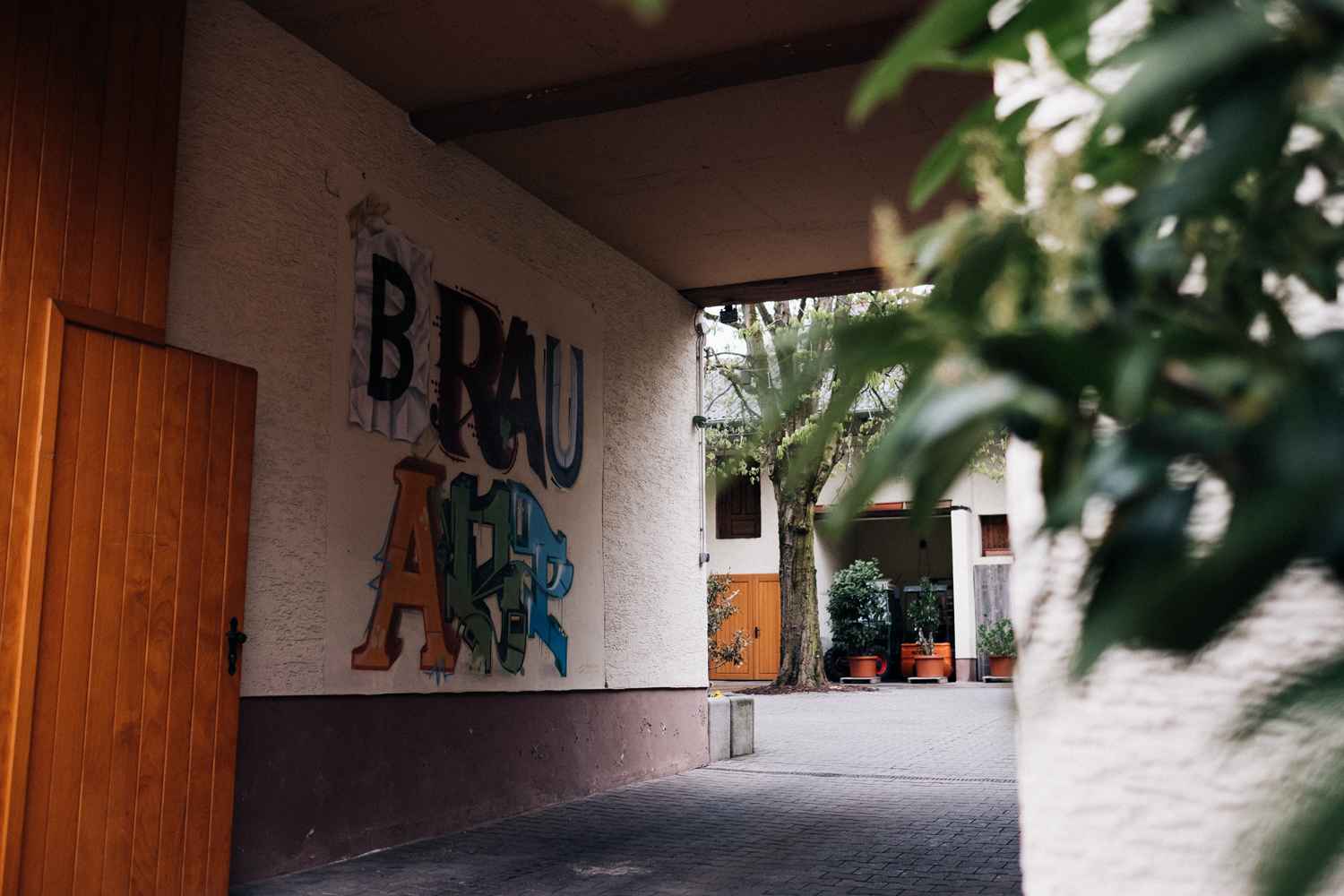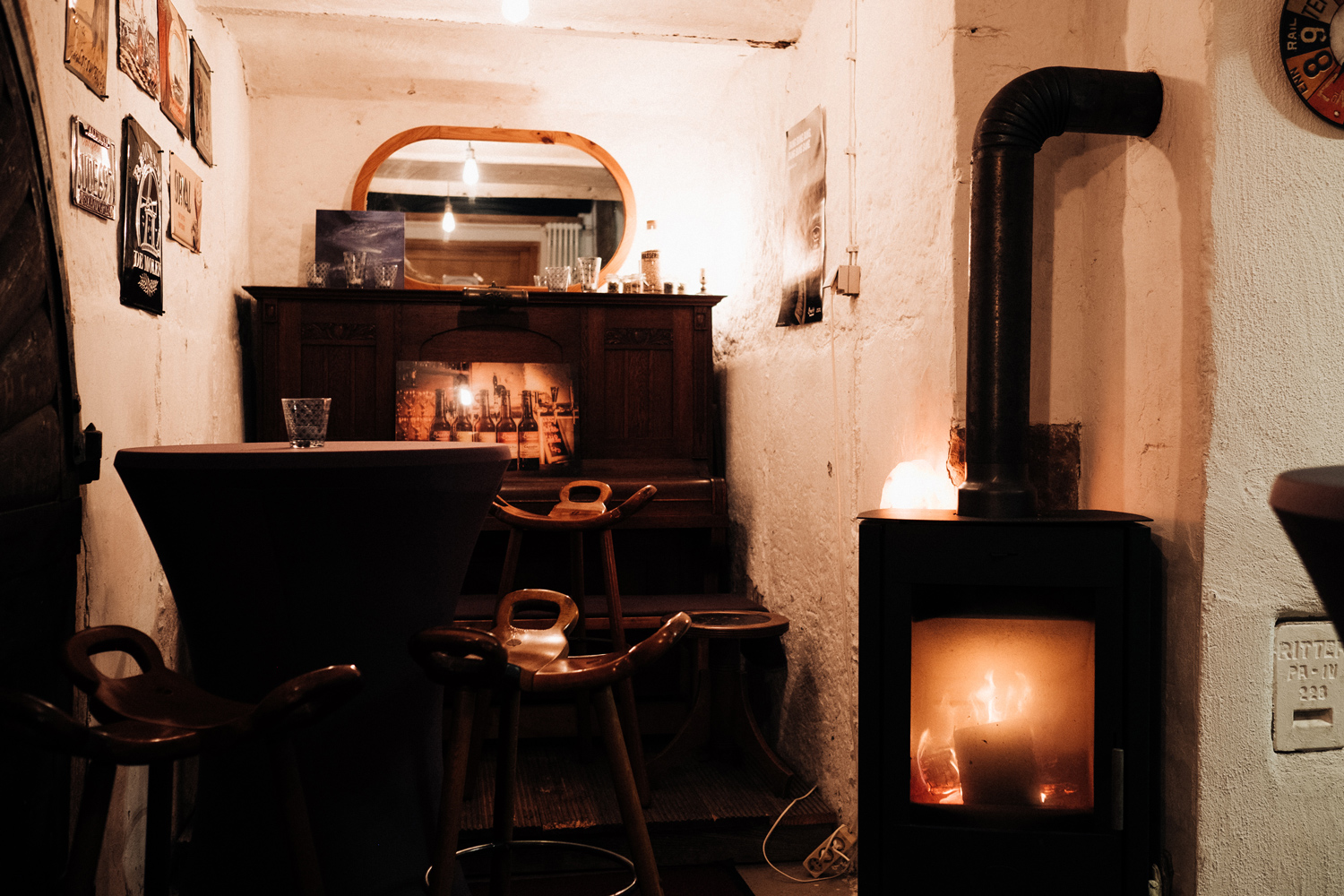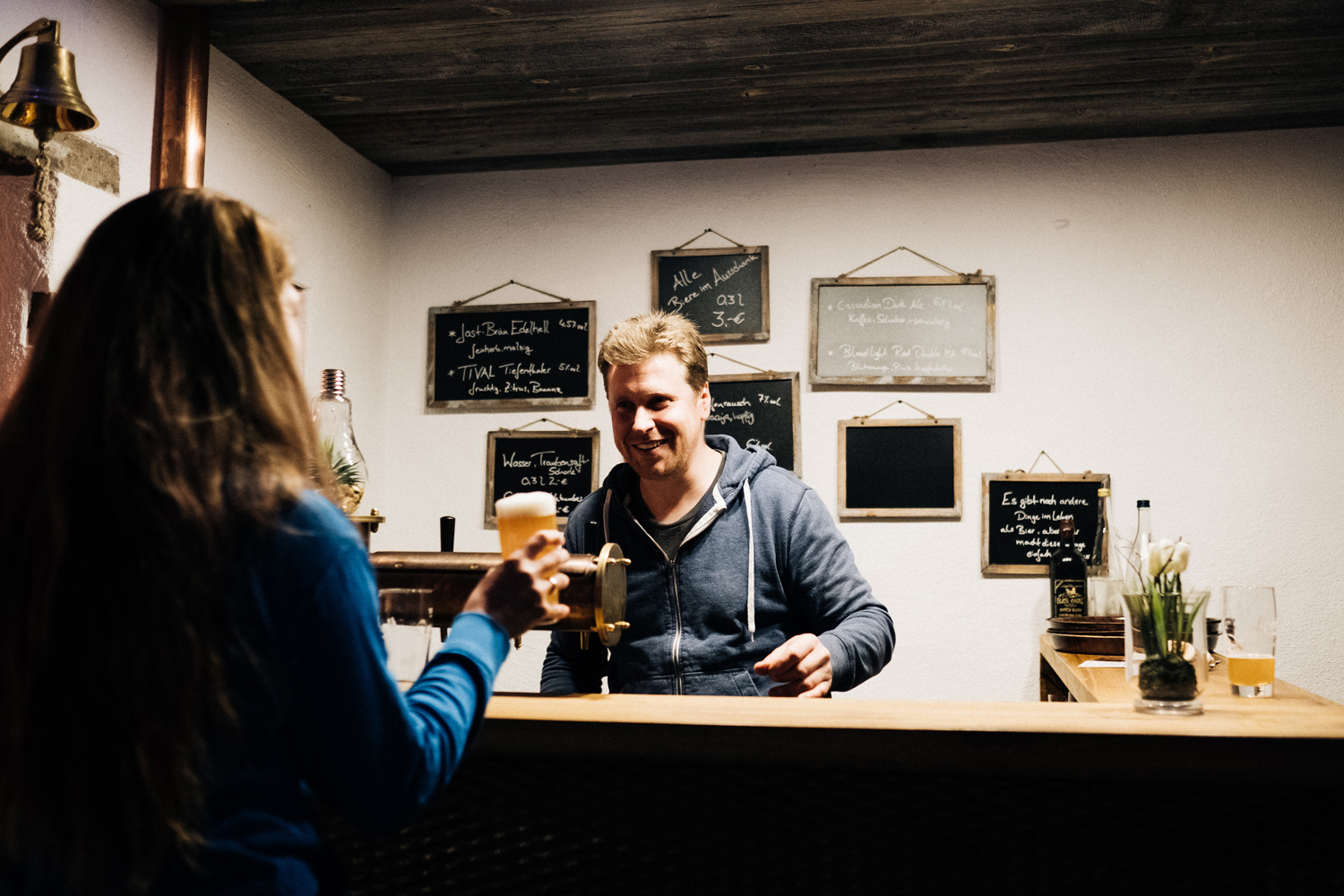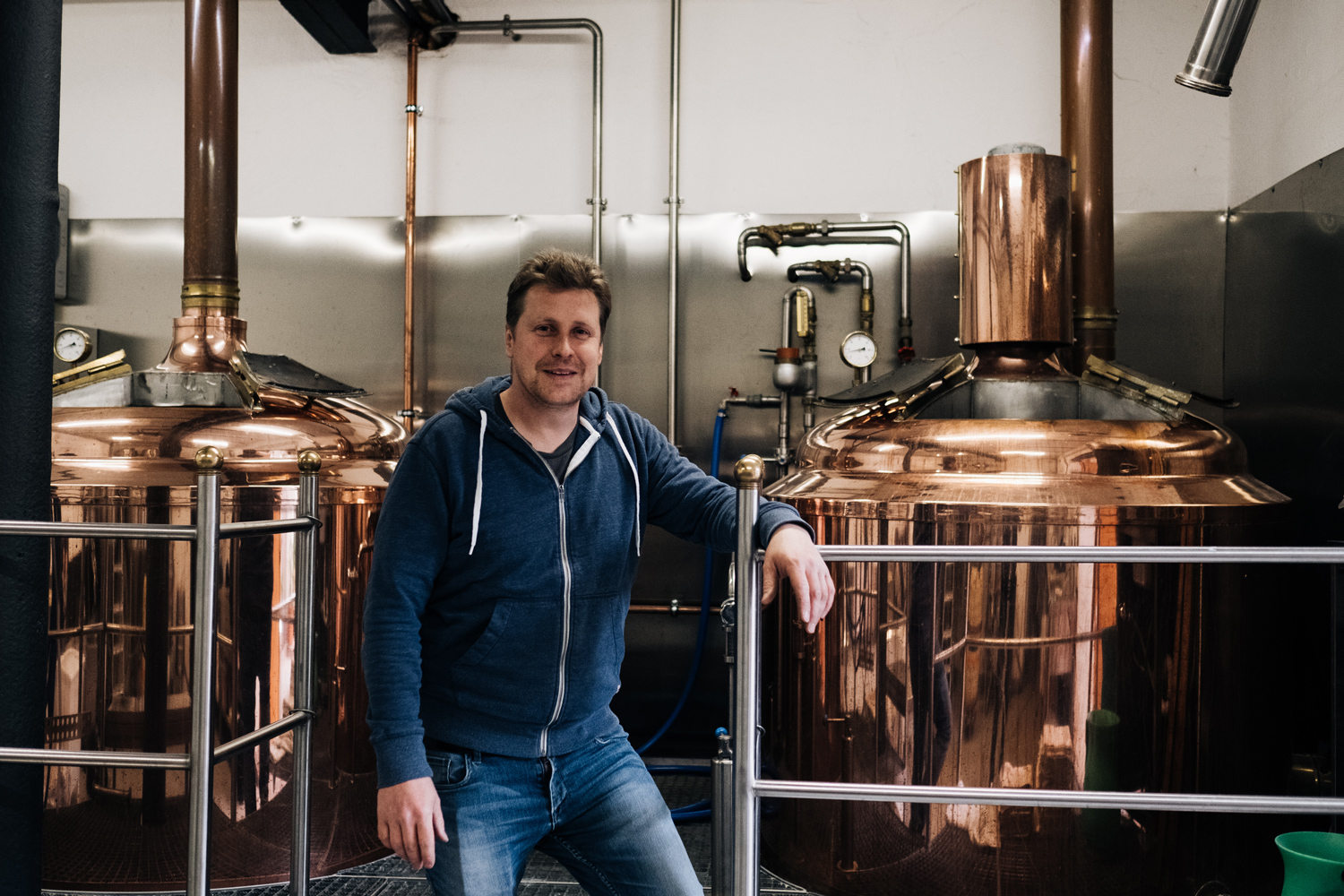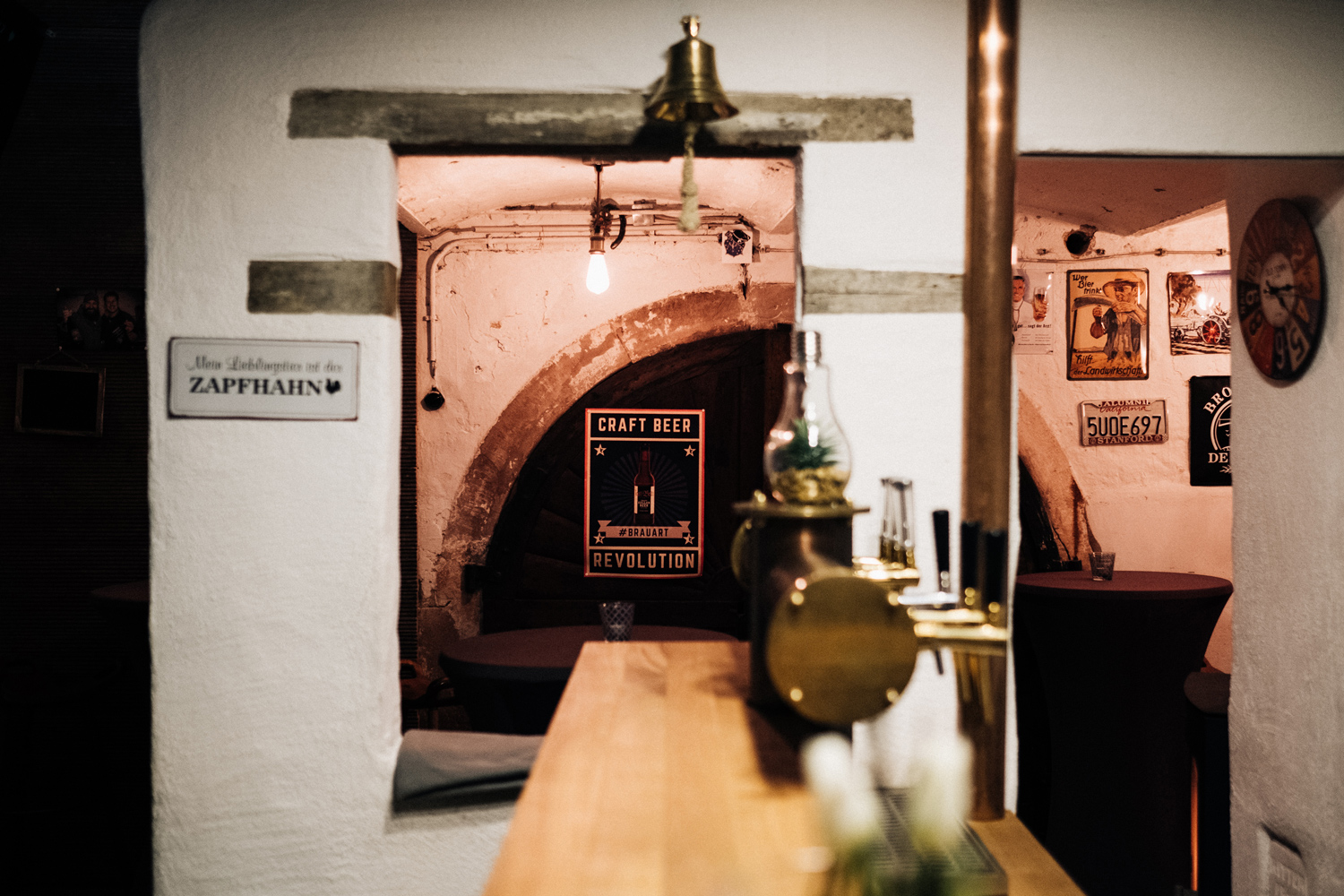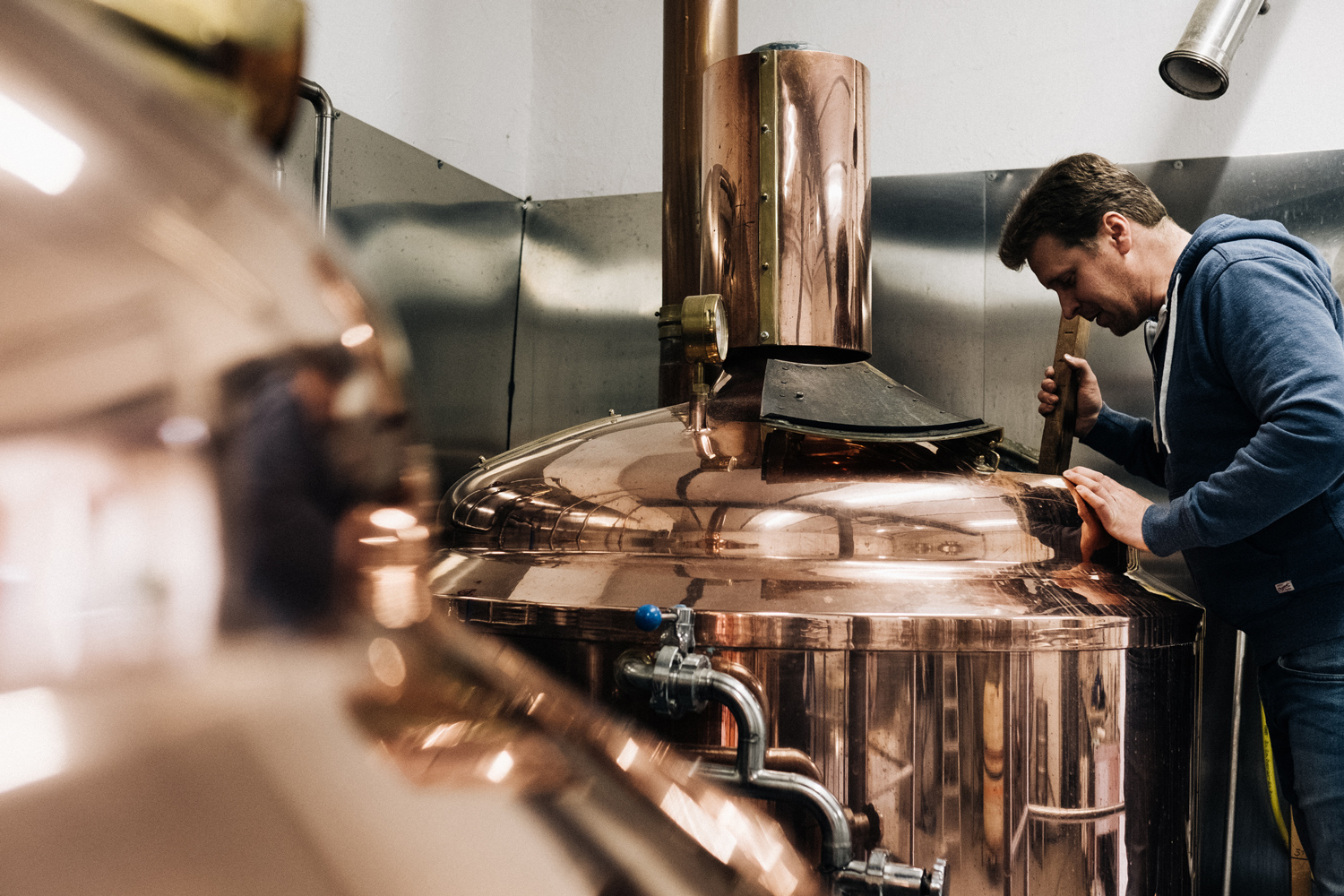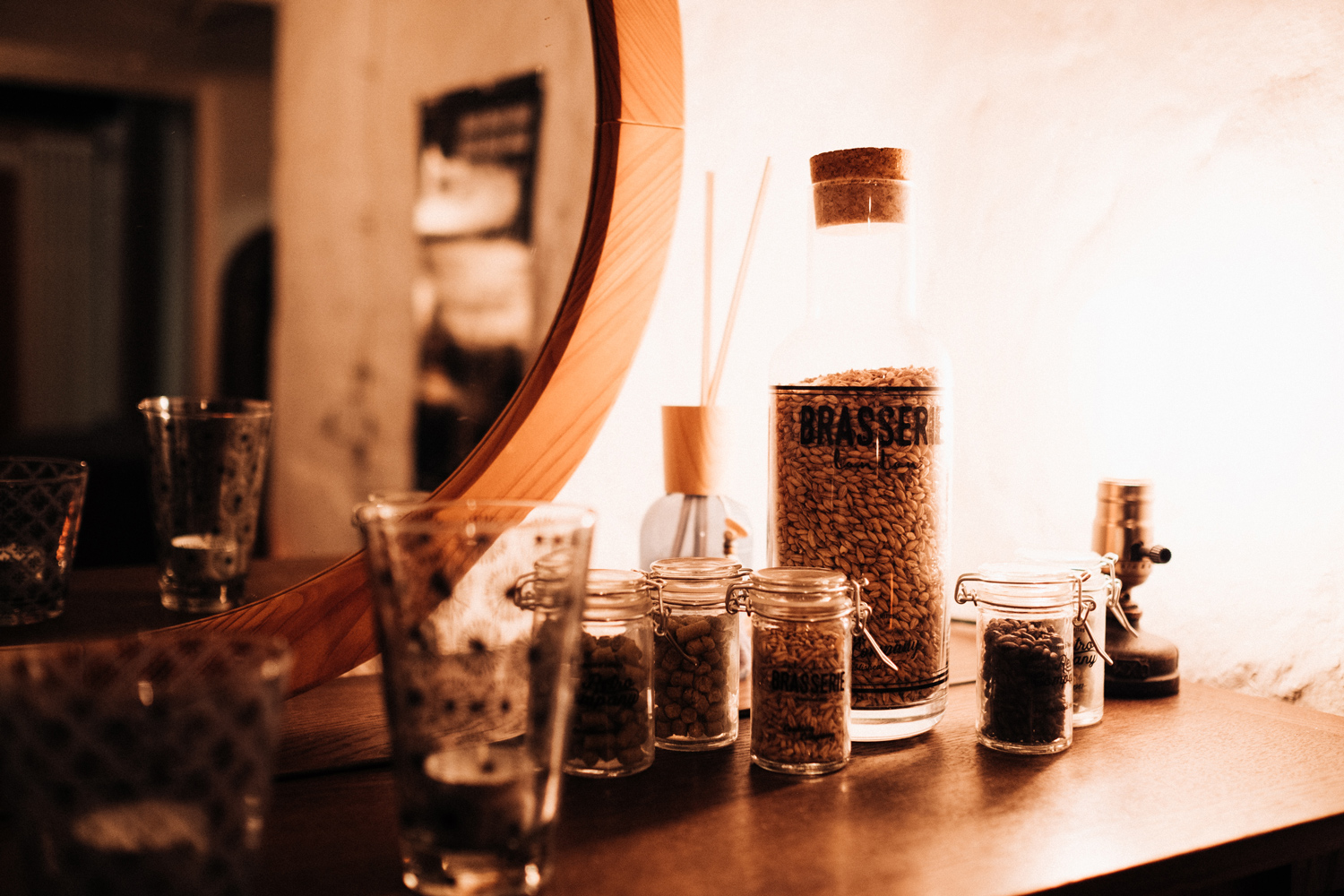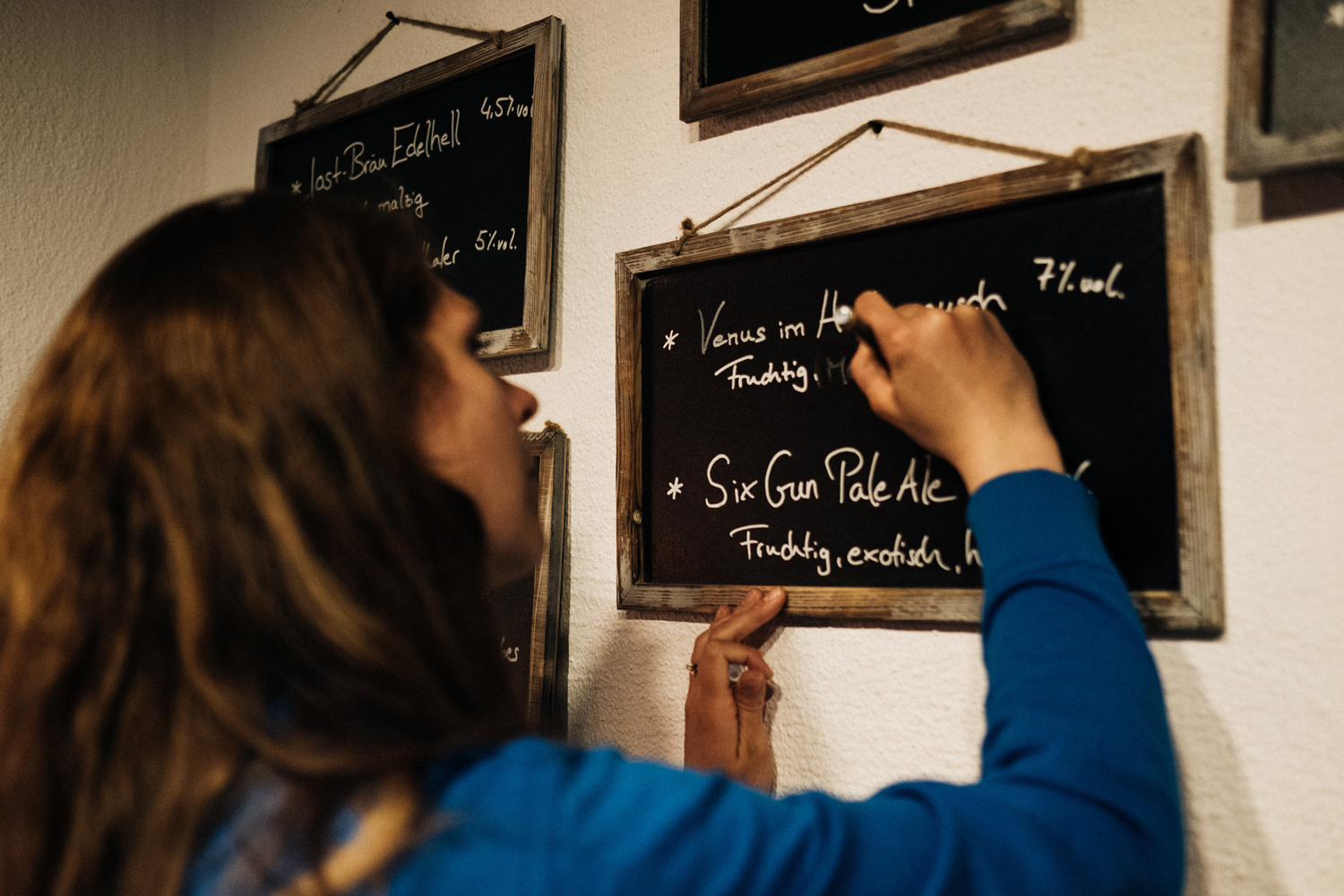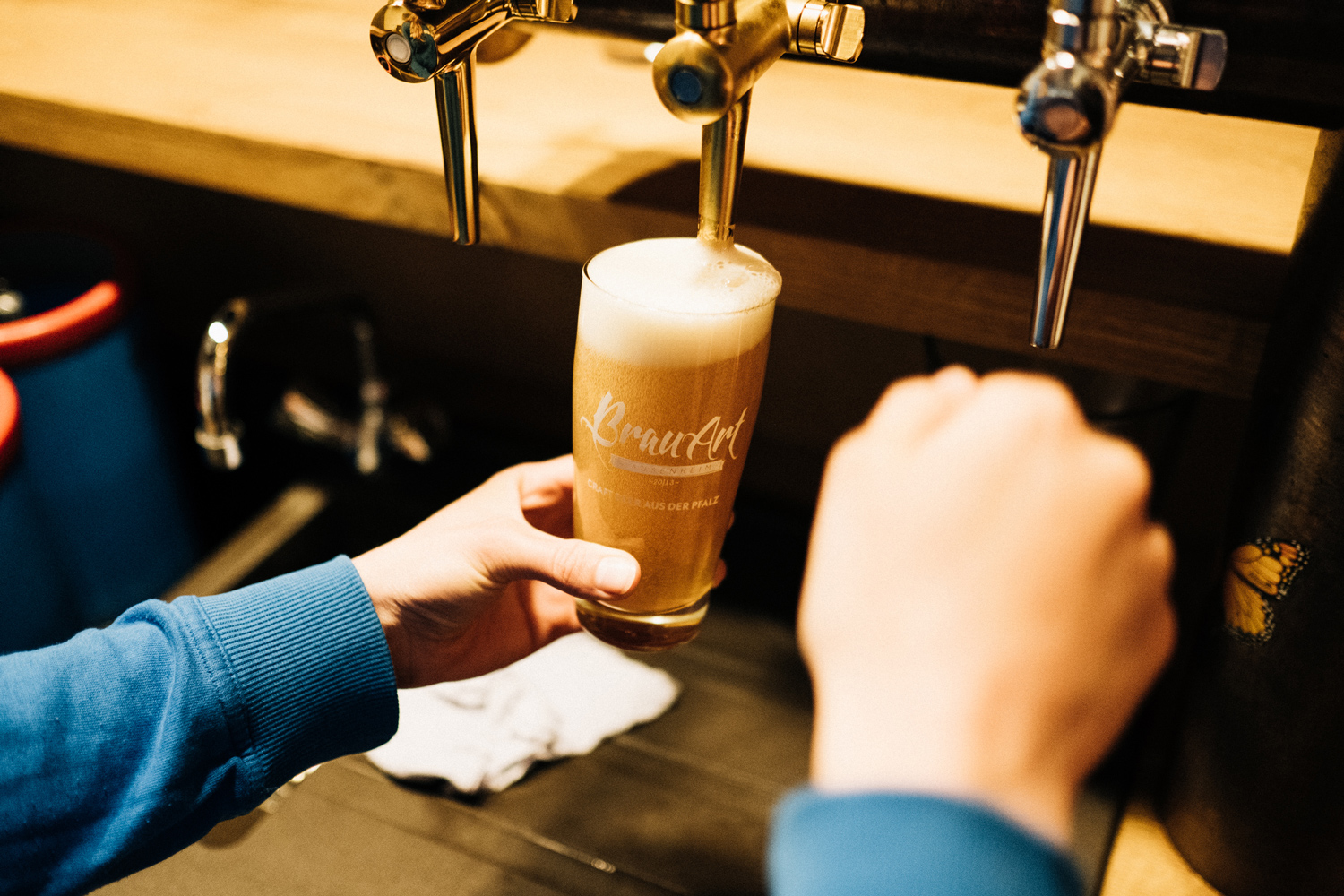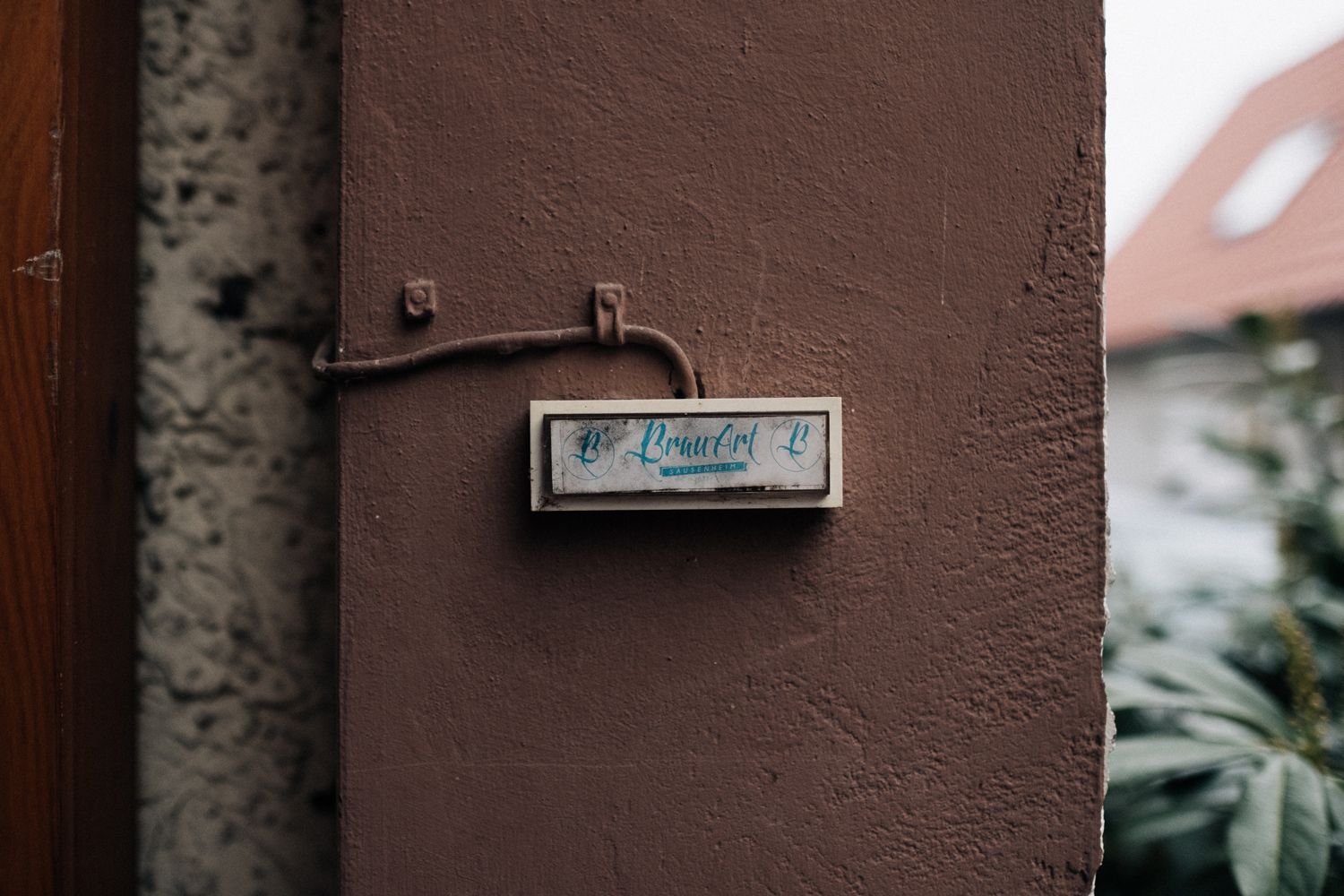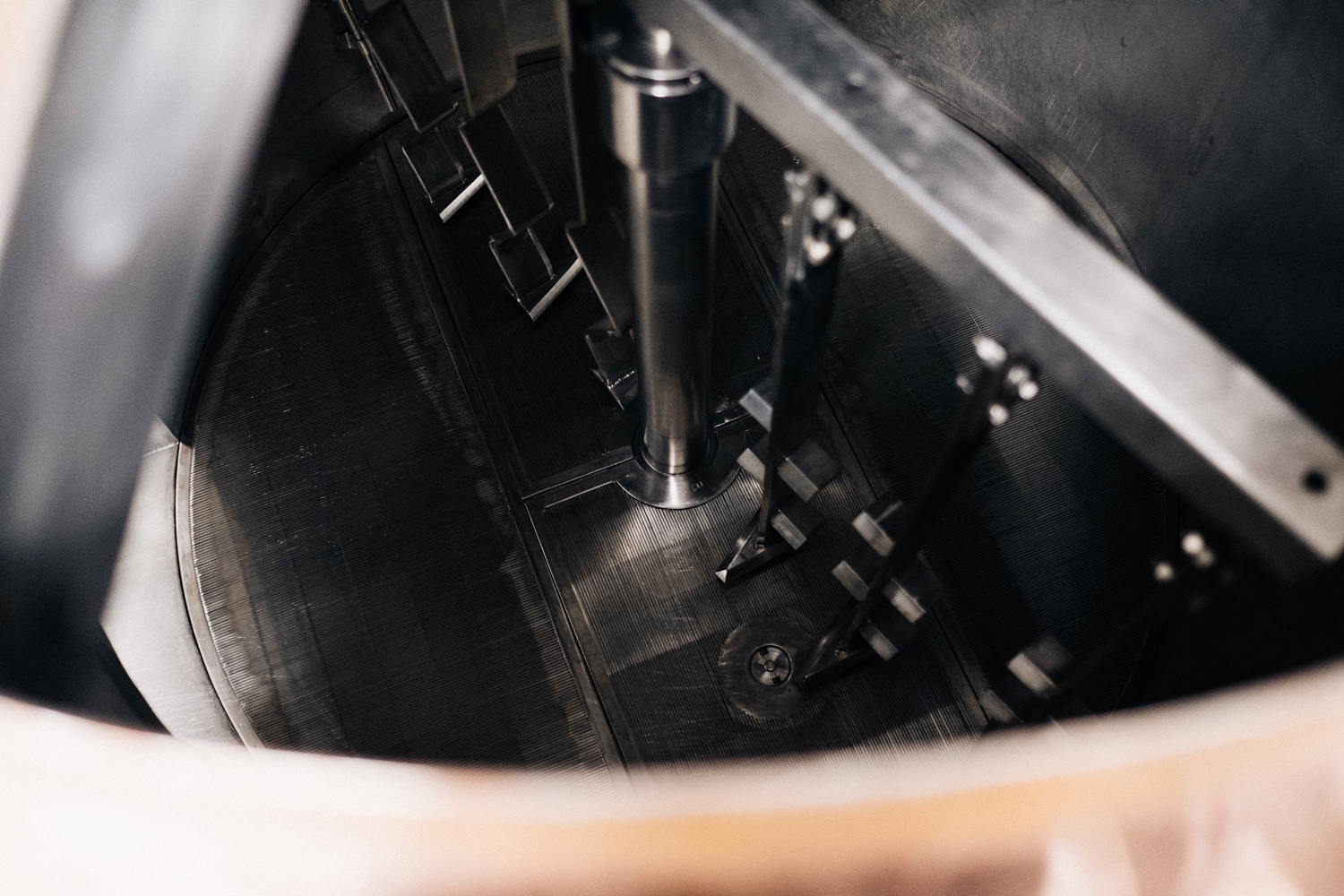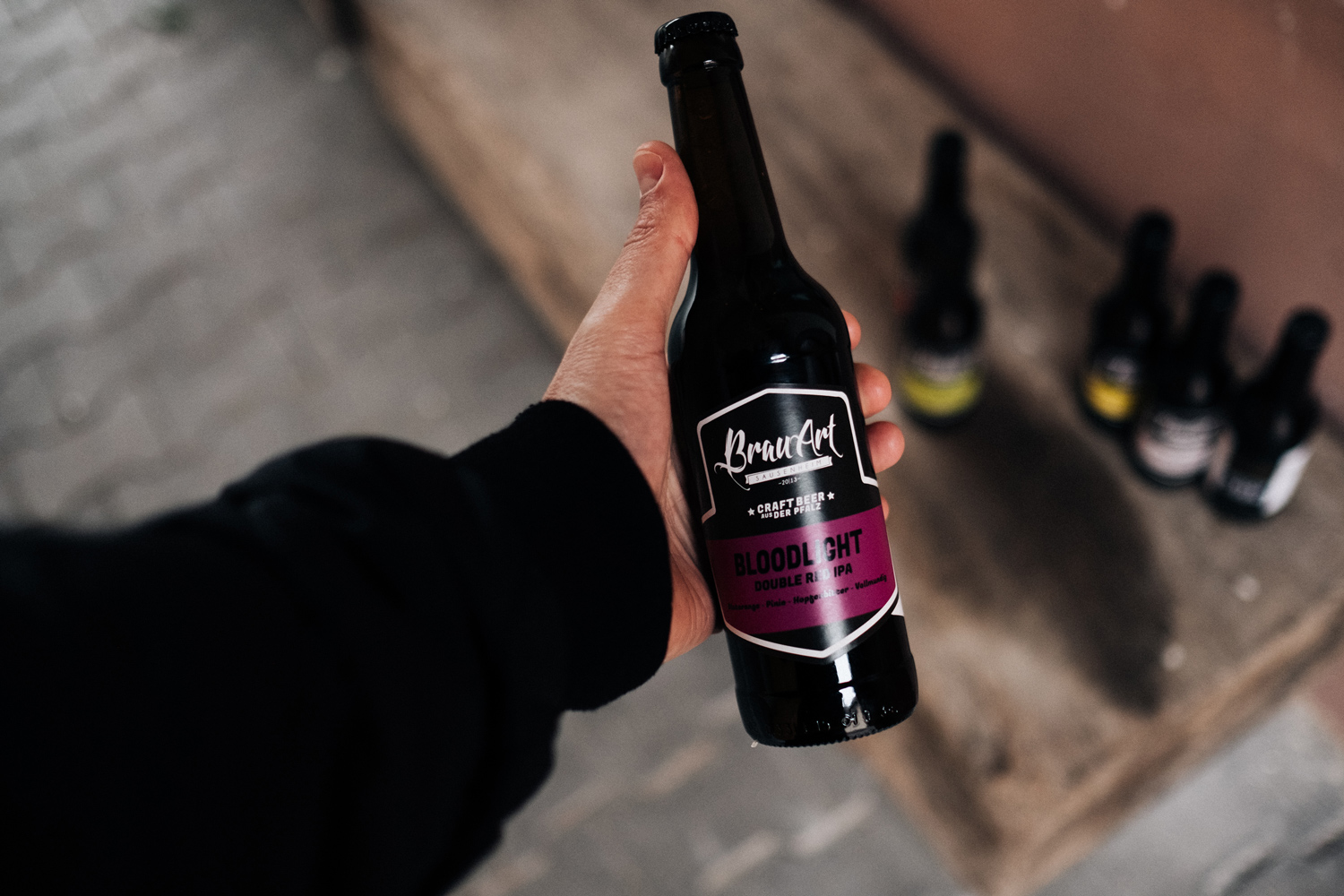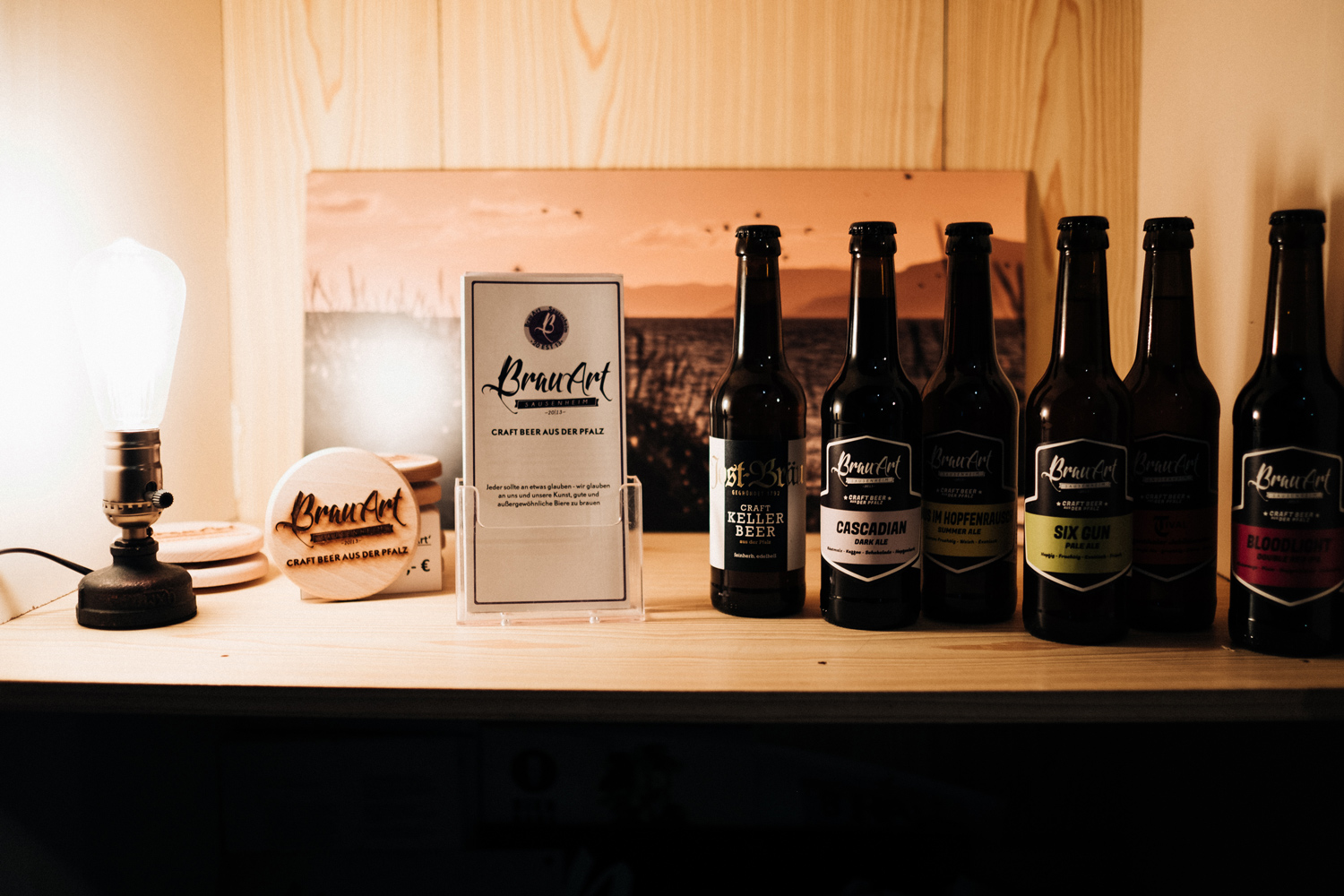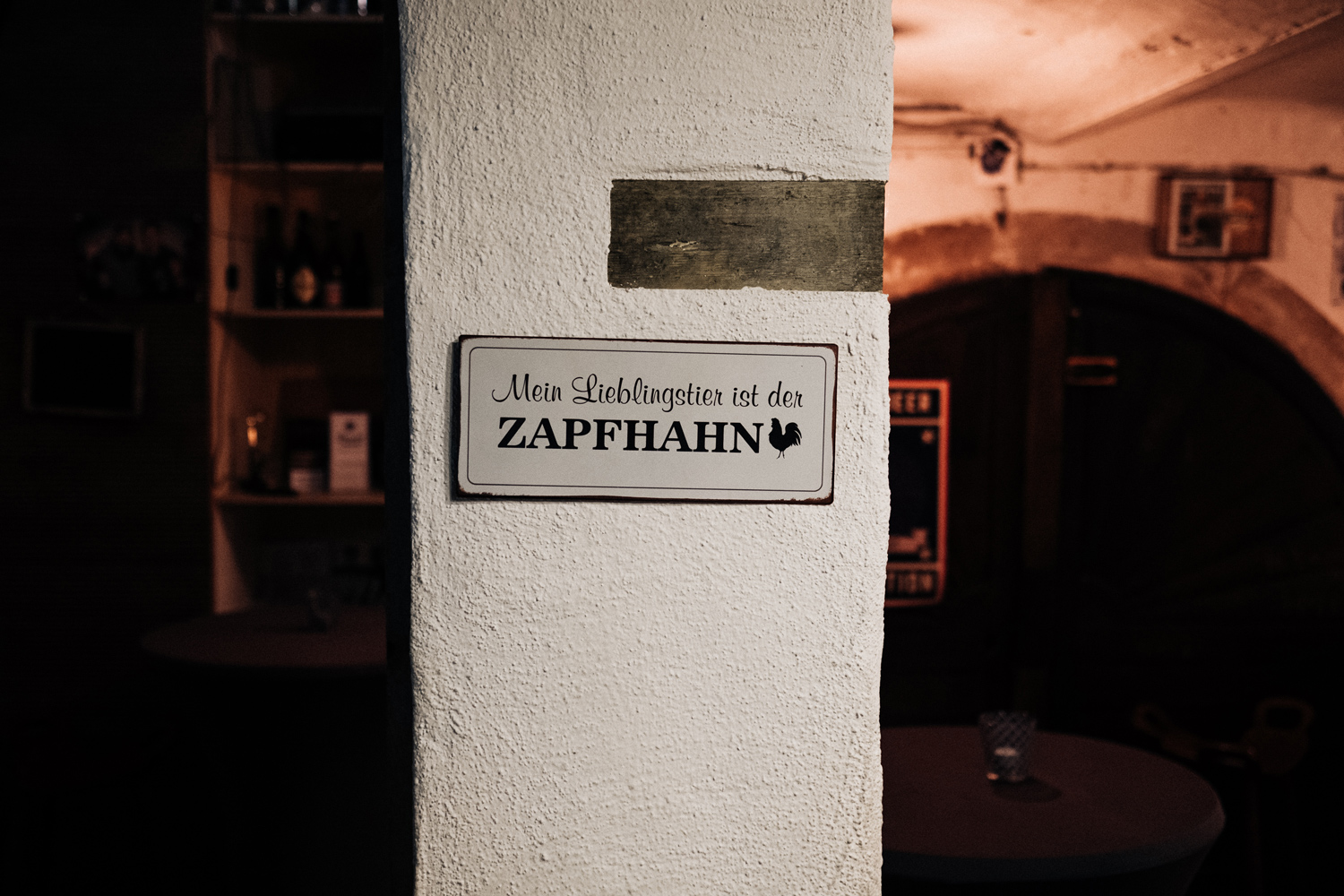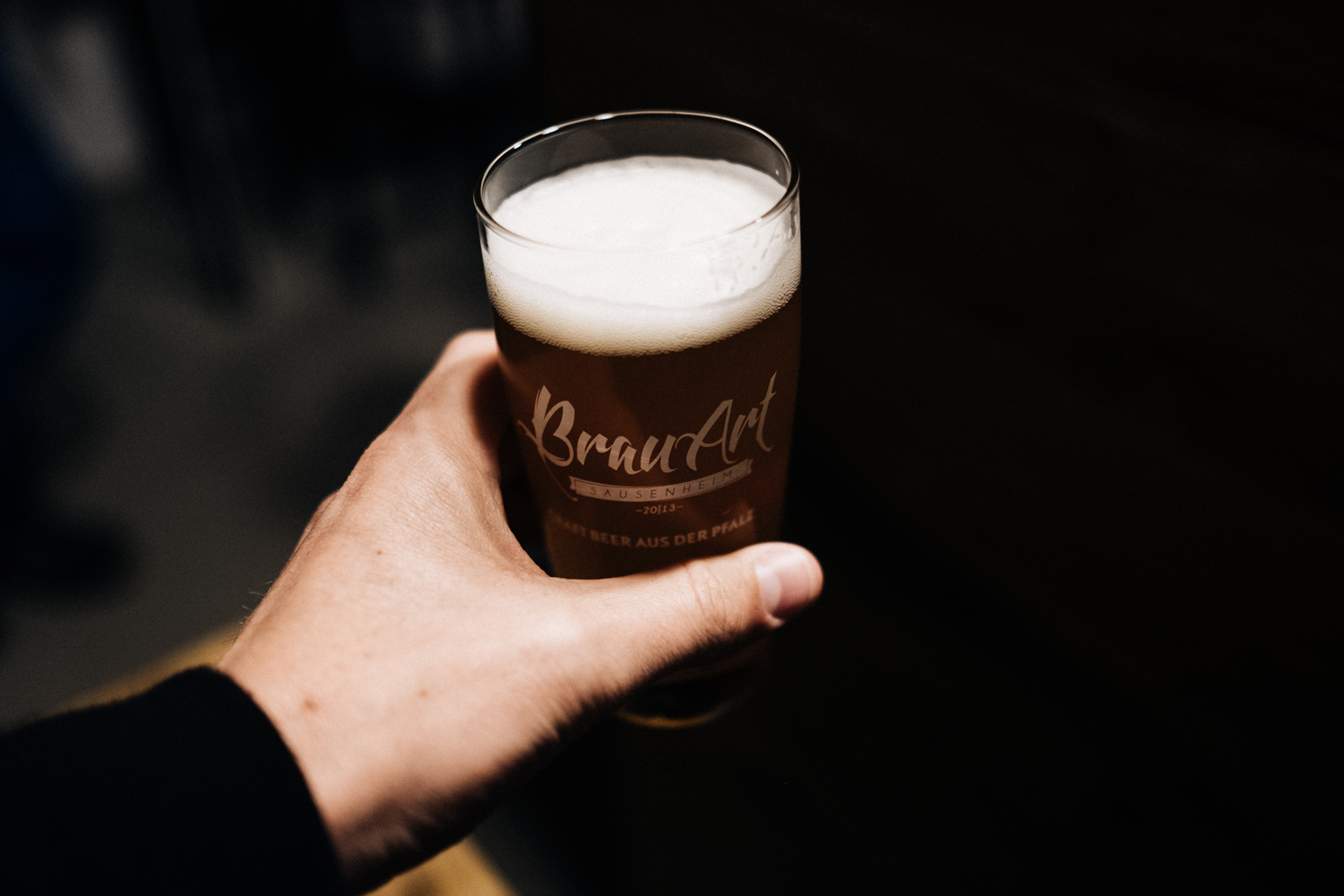The 85-kilometre Wine Route extends from the German Wine Gate in the south all the way to the municipality of Bockenheim in the north. Just before its terminus, it passes through the municipality of Grünstadt. Ten years ago, two Palatinate locals made a decision here in the centre of the local wine-growing area and revived a local tradition that had almost fallen into oblivion—beer brewing.
The alleys in Sausenheim become narrower the closer you get to the BrauArt factory. This 2,300-inhabitants part of town has only been a part of the municipality of Grünstadt since 1969. Hidden close to the end of a blind alley is the farm of the Krämer family. “My wife and I are the fifth generation who work the family estate,” says Mathias Krämer. “Beer from Grünstadt was a matter of course for our parents, grandparents and great-grandparents. The town used to have sixteen breweries between 1800 and 1970.”
The ‘Shady Alley’ opens its doors at 11 a.m. every Saturday. “Our micro pub is furnished in a typically British manner. We serve twice a week: on Saturdays around noon and Wednesday evenings—outside in the court when the weather is fine.”
The first guests enter just after the bar hasopened. “Five Bloodlight Double Red IPAs please” goes the loud order in Germanic-sounding English—an American motorbike gang with young soldiers from the nearby military base in Kaiserslautern orders the first round from the landlord. Mathias gets busy behind the bar drawing sour cherry-coloured beer from one of the six brass taps.
“My friend Markus Adler came up with the craft beer idea. He used to bring beer in big champagne bottles from his Belgium trips. He was simply tired of the poor variety in taste that German beers had to offer. Today, I know the reason for the uniformity: the big breweries’ dominance. They bought up the little ones and stopped their production. They are to blame for the bulk taste that makes one beer seem just like another. We wanted to change that!”
